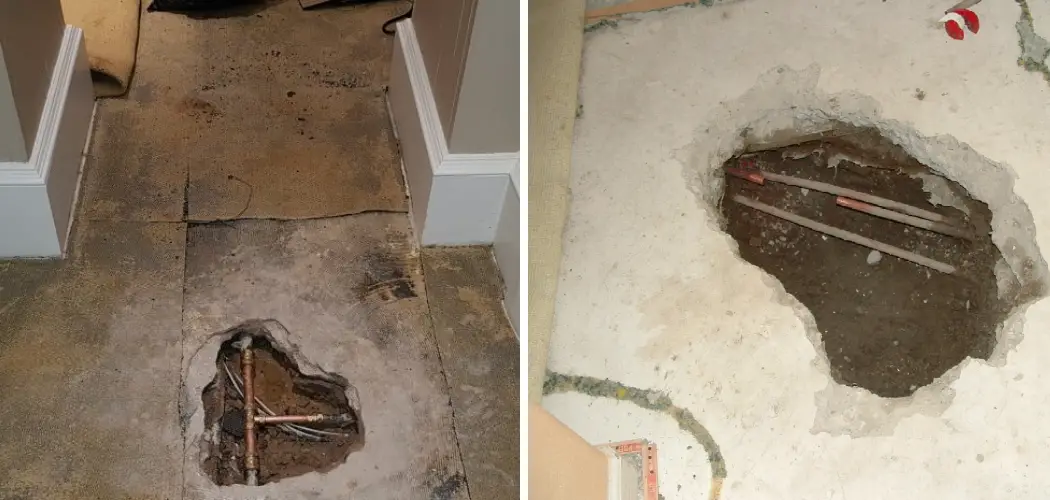Do you suspect that you might have a slab leak? If so, it can be an incredibly daunting prospect. Slab leaks can cause extensive damage to your home and are typically much more expensive and difficult to find than other plumbing problems. Fortunately, with the right knowledge and some basic DIY skills, figuring out if you have a slab leak isn’t as complicated as it may seem.
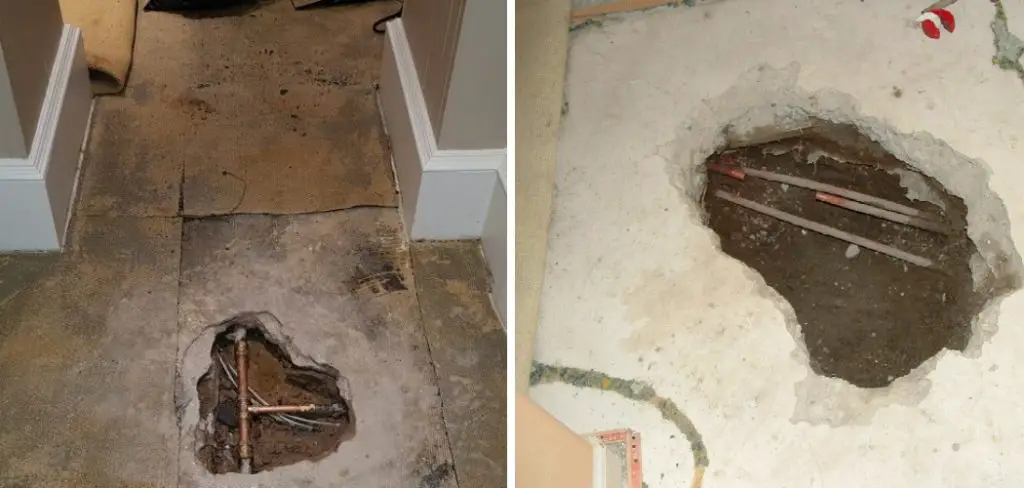
Whether you’re a homeowner or a renter, it’s essential to know how to find slab leaks and take necessary actions as soon as possible.
In this blog post, we will look at finding a slab leak in your home—from recognizing the telltale signs of water damage to hiring professional assistance if necessary—and walk through the best steps for finding it. Read on to learn more!
What Will You Need?
Before we get into the steps for finding a slab leak, you must ensure you have everything you need on hand. These items include:
- A flashlight
- A screwdriver
- Food coloring (optional)
- Access to your home’s water shut-off valve
Having these items ready will ensure that you are fully prepared to identify and locate any potential slab leaks in your home.
9 Easy Steps on How to Find Slab Leak
Step 1. Inspect Your Water Meter:
The first step to finding a slab leak in your home is to inspect your water meter. First, ensure all water appliances and faucets are turned off in your house. Then, check the water meter to see if the dials are still moving. If they are, it signifies that water is still flowing somewhere in your home and this could mean you have a slab leak.
Step 2. Check for Unusually High Water Bills:
Another sign of a potential slab leak is a sudden spike in your water bill. If your water consumption patterns have stayed the same, but your bills have increased drastically, it might be due to water leaking underneath your slab.
You can compare your current bills with past ones to note any substantial increase in water usage. This step can provide a valuable clue if there’s a slab leak in your home.
Step 3. Look for Damp or Warm Spots:
An indicator of a slab leak is frequently damp areas or warm spots on your floor. These spots may indicate water leaking under the slab and permeating through the top. You should contact a professional for a detailed inspection if you notice any such areas, especially in rooms without other water sources. This could indicate a severe slab leak that requires immediate attention.
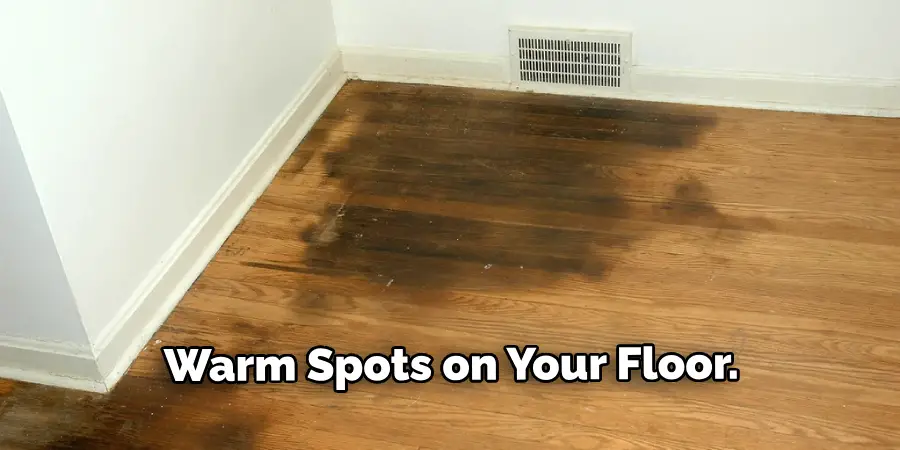
Step 4. Listen for Running Water:
One of the simplest ways to detect a slab leak is by listening carefully to the sound of running water. Turn off all appliances and faucets that use water, then place your ear on the ground in a quiet house area. If you can hear the sound of rushing water, this could be a sign that you have a slab leak in your house. Remember, this isn’t a foolproof method, and you may need professional help to confirm a slab leak.
Step 5. Check for Low Water Pressure:
A reduction in water pressure could be an indication of a slab leak. If you notice that the water pressure in your shower or faucets has decreased significantly without any apparent reason, this could be due to a leak in the water line beneath the slab. However, remember that there can be other reasons for low water pressure, so this evidence alone is insufficient to confirm a slab leak.
Step 6. Inspect the Condition of your Lawn and Plants:
Surprisingly, the exterior of your home can also provide clues about a potential slab leak. If you notice patches of unusually lush vegetation or areas of your lawn that are consistently wet, this could be due to an underground water leak nourishing those spots. Similarly, if your foundation plants are flourishing more than others, they may benefit from a water source leaking underneath your slab. It’s essential to consider these signs and other symptoms to diagnose a slab leak accurately.
Step 7. Monitor the Mold and Mildew:
Mold and mildew growth is a common aftermath of any water leak, including a slab leak. If you notice a mildewy smell or see mold growing in some regions of your home, this could be a sign of a hidden slab leak.
Mold typically thrives in damp, dark spaces, so if you notice it in places that are usually dry, it’s worth getting a professional opinion to confirm whether you have a slab leak.
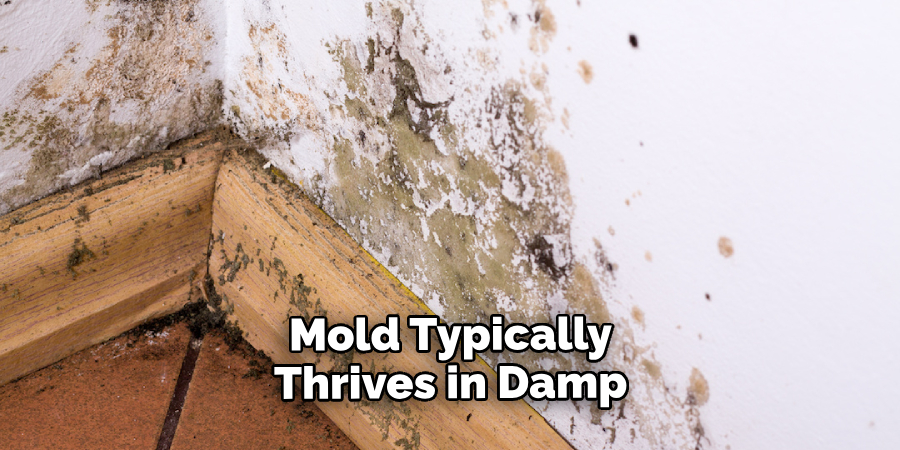
Step 8. Observe any Cracks in the Floor or Walls:
Cracks appearing on your floor or walls can be a strong indicator of a slab leak. As water seeps from the leak and undermines your home’s foundation, it can cause shifts and movements, which can result in visible cracks.
these cracks not only indicate a slab leak but can also cause significant structural damage to your home if not addressed promptly. Therefore, if you start noticing unusual cracks in your home’s flooring or walls, you must seek professional assessment to determine if they are due to a slab leak.
Step 9. Watch for Sudden Insect Infestations:
Insects like mosquitoes, ants, and cockroaches are attracted to moisture. If you notice a sudden increase in these pests, particularly in some regions of your home, this could signify a hidden slab leak.
The moisture from the leak can create an ideal breeding ground for these insects, leading to infestations. If you’ve ruled out all other potential causes and the problem persists, check for a slab leak.
By following these nine steps, you can identify potential slab leaks in your home. Remember that while some preliminary checks can be carried out independently, it’s essential to seek professional assistance for a more detailed and accurate diagnosis.
5 Additional Tips and Tricks
- Use a Moisture Meter: Moisture meters are handy devices that can detect high humidity levels, a common sign of a slab leak. Simply run the device along your floors and walls, and if the meter readings increase significantly, you may have a slab leak.
- Check for Warm Spots: Slab leaks often cause hot water to seep through your flooring. If you feel warm spots on your floor, it could signify a hot water line leak.
- Inspect Your Floors: Slab leaks can cause uneven flooring or mold growth on your floors. Take note of any inconsistencies in your floor’s appearance and feel for dampness under carpets or rugs.
- Try a Detectable Dye Test: Some leaks are difficult to locate with the naked eye, but a detectable dye test can help. This process involves adding a small amount of fluorescent dye to your water supply and checking for any dye traces on your floor or walls.
- Seek Professional Help: While DIY methods can help identify potential slab leaks, it’s always best to seek professional help for accurate detection and repair. A licensed plumber will have the necessary tools and expertise to efficiently locate and fix a slab leak.
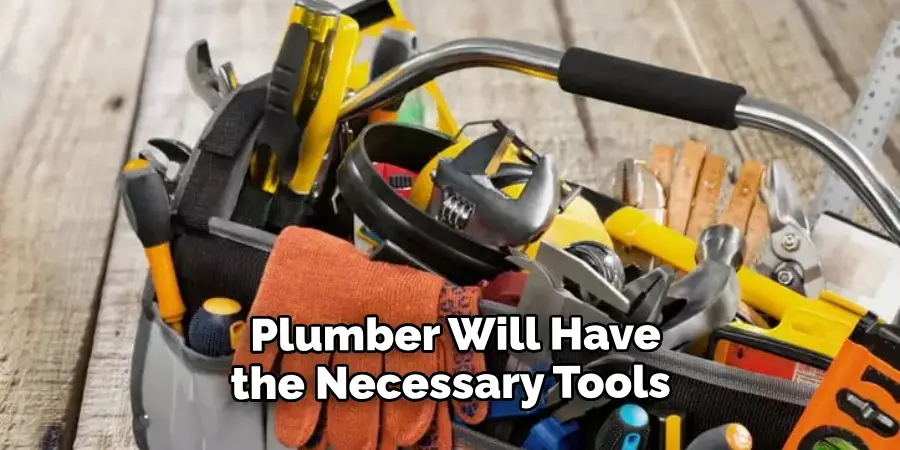
With these additional tips and tricks, you can increase your chances of finding a slab leak in your home.
5 Things You Should Avoid
- Ignoring Signs: Don’t disregard potential signs of a slab leak, even if they seem minor. Small leaks can quickly escalate into major problems, leading to structural damage and costly repairs.
- Skipping Maintenance: Regular plumbing system maintenance can help prevent slab leaks. Avoiding routine checks can lead to undetected problems and, eventually, significant leaks.
- DIY Repairs: While it may be tempting to fix a leak yourself, improper repair can lead to more severe issues. Always seek professional help for slab leaks.
- Postponing Leak Repairs: Postponing the repair of a detected slab leak can lead to extensive water damage, mold growth, and higher utility bills. Act promptly once a leak is detected.
- Using Unlicensed Contractors: When seeking professional help, avoid hiring unlicensed contractors. They may need more expertise and equipment to locate and repair slab leaks effectively. Always hire licensed professionals to ensure quality work.

By clearing these common mistakes, you can effectively manage and prevent slab leaks in your home.
Conclusion
To conclude, how to find slab leak is not for the faint of heart. It requires precision, patience, and an understanding of your home’s system. That being said, it isn’t impossible, and most homeowners can do it on their own using available resources and help from an expert.
Any problem in this area can be safely found with proper investigation, but if you’re feeling overwhelmed or things aren’t as simple as you thought they might be – don’t hesitate to call in a professional for assistance.
The small cost will be nothing compared to what could happen if something goes wrong or goes unaddressed your home is worth taking all the steps necessary to protect it.
So take action before a more significant issue arises, investigate thoroughly to prevent future damage, and enjoy knowing your home is safe from unseen problems like a slab leak.

